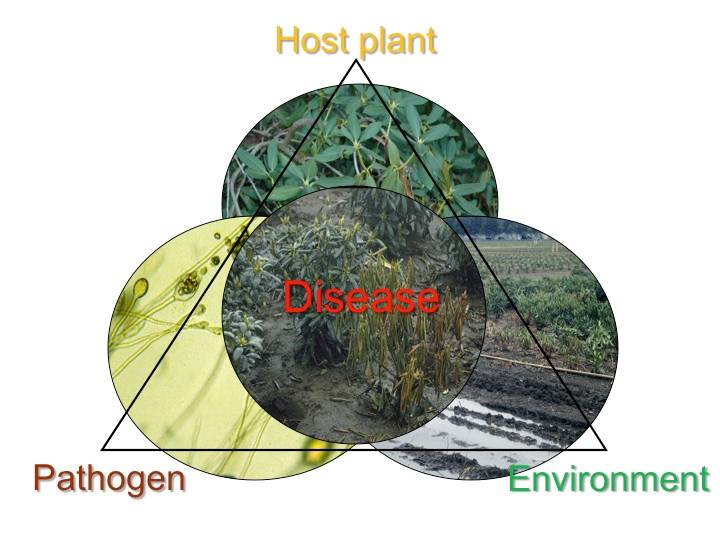
A plant disease is any aberrant condition that changes the structure or function of a plant. It is a physiological process that impacts some or all plant processes. The disease may also reduce harvest productivity and quality. The disease is a process or a change that occurs over time.
Symptoms are the visible effects of diseases on plants. A symptom is any detectable change in the plant's color, form, and/or functions in reaction to a pathogenic organism or disease-causing agent. Symptoms of the disease include leaf spots or blights, discoloration of plant tissue, wilting, and stunting.
Physical evidence of the pathogen, such as fungal fruiting structures, bacterial slime, or cyst nematode females is the sign to diagnose plant disease. Plant disease signs can appear on both internal and exterior plant tissues, and they can aid in disease diagnosis.
To comprehend a plant disease and how to manage it to avoid or decrease its impact, it is crucial to understand the factors required for disease development, each of which forms a side of the disease triangle. The disease cycle refers to the sequence of events that occur while a plant disease advances. To prevent disease development, management interventions are aimed to disrupt certain stages of the disease cycle.
A vulnerable host plant, the disease-causing pathogen, and an environment favorable to disease development are all required for a plant disease. The three sides of the plant disease triangle are as follows. The disease does not exist in the absence of all three components.
Host
A host is a plant that has been invaded by a pathogen. Many pathogens thrive in both corn and soybean, and some of them affect both crops. The host acts as a source of sustenance for the invading pathogen. A host must be vulnerable to pathogen infection. Corn and soybean cultivars are produced to be resistant to certain infections and are graded depending on how resistant or tolerant they are to pathogen infection.
Pathogen
Pathogens are capable of infecting and causing disease. Plant pathogens include fungi spores, bacteria, virus particles, and nematode juveniles or adults. Fungi are the most frequent plant pathogens.
Favorable Environment
Plant diseases need a favorable environment to grow. For example, for disease (white mold) to occur, soybean and the white mold must interact during flowering in cool, moist environments. A favorable environment is vital for disease development. Unless environmental circumstances are suitable, even the most vulnerable plants exposed to massive numbers of a pathogen will not develop the disease.
Managing Crop diseases with Three corners of Disease Triangle
The plant disease triangle is made up of three components: a susceptible host plant, a pathogen, and a favorable environment.
Because all three components are required for the formation of a plant disease, changing any of these three factors can affect a disease. Growing disease-resistant cultivars, for example, can alter the host plant. The pathogen can be eradicated by tilling residue, rotating crops so that diseases do not survive year after year on the same crop, suppressing insects that transfer pathogens to plants, or killing the pathogen using fungicides. Finally, the environment can be controlled to make it less conducive to disease, for example, by adjusting row spacing or draining low areas.
















